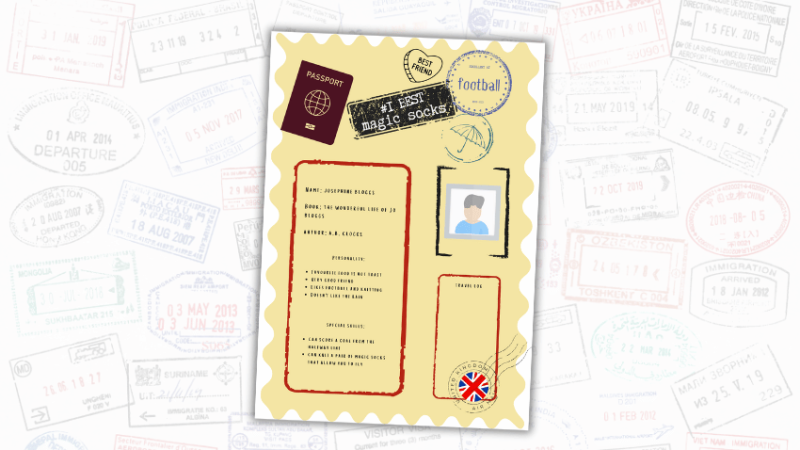Help EAL pupils develop vocabulary with a range of media

Create a vision for students with English as an additional language to fill knowledge gaps, boost vocab and bring learning to life in the classroom, says Beth Southern…

- by Beth Southern
- Experienced EAL consultant and founder of EAL HUB and EAL STAR Visit website

Download four free image resources mentioned in this article, here.
In the UK, EAL students account for 21% of children in primary schools and 17% of students in secondary schools. That is over 1.5 million EAL learners in our education system at present, and the number is on the rise.
As classroom teachers, we are often expected to teach a wide range of needs, and EAL coverage on initial teacher training courses is woefully lacking in preparing teachers for supporting this group of learners.
As EAL learners don’t attract funding, it is often down to the teacher to creatively support them. So how about using some techniques that would benefit the vocabulary development of all learners, not just EAL?
Let’s talk about visual media. Essentially, visual media uses a range of strategies to bring learning to life. I would include pictures, picture books, videos, drama, audio (songs, soundbites, soundtracks) and charts/graphs under this category of scaffolding.
Why use it?
One of the areas teachers often complain that they find difficult is knowing where their learners are starting from. Research shows that EAL children cope best when they are able to ‘hook’ learning on to prior knowledge.
This is linked to code switching whereby they think in English, switch to their first language and then back to English. Visual media is perfect for assessing prior knowledge.
Just because a child lacks English doesn’t mean that they lack knowledge so it is important that we find out what they do know and not what they don’t know!
For many learners, not just EAL children, an experience gap leads to a word gap and this can impact on learning.
For example, children from Syria or Turkey might have no experience of the British seaside, but importantly many of their English peers might not either.
Using video clips, soundbites, images and picture books can fill that gap and allow children to picture what it is that they are learning about.
They can then ‘hook’ that learning onto what they do know about beaches from home, or things that they have seen on television or in films.
‘A picture is worth a thousand words’ can be no truer than when applied to an EAL learner. Visual media is ideal for developing vocabulary, which is the biggest issue that EAL children face, but no child can have too much vocabulary and so it is always useful from a whole-class point of view too.
Tier 2 words can be described as high-frequency words often found in written texts, the vocabulary required to succeed academically from KS1 up to postgraduate level.
Sometimes people assume tier 2 words are just hard words, but actually they aren’t and many picture books aimed at young readers are littered with them. This makes them ideal for introducing high-utility words to children and drilling down into them to understand them better.
Picture books and images can also be used for building nouns and assessing prior knowledge – “can you find…?”, “where is the…?”
Types of visual media
Pictures
Ideal for assessing prior knowledge, developing inference, prediction and emotional response, such as:
- What time of day is it? (inference)
- Where is this? (inference)
- What might happen next? (prediction)
- What can you see? (assessing prior knowledge)
- How would you feel if you saw this? (emotional response)
- Who lives here? (inference)
Picture books
Ideal for any age. They provide an opportunity to access rich vocabulary supported by detailed illustrations. There are so many high-quality picture books that it is easy to link them to your topics and units as a pre-teach opportunity or to bridge an experience gap.
Use during a shared reading experience to develop discussion and consolidate misconceptions.
Other ideas for picture books include:
- Illustration investigation – pick two pages and compare images. What changes? What stays the same? What can they see? What can they infer or predict?
- Emotion tracking – use a picture book with a main character and use a chart to track and discuss different expressions and emotions through the book.
- Discuss vocabulary such as colours, animals, fruits, objects, weather, seasons and celebrations using picture books as the central resource.
- Rewrite the ending – this is a high-level skill but really develops a writer’s craft.
- Use them to demonstrate phases of a story, transitions, character development and so on.
- Drama/roleplay linked to them creating something or acting out parts of the book; freeze frame, hot seating and so on.
- Add dialogue to wordless picture books, what do you think characters would be saying, how can you tell?
Video
Clips, such as animated short films and documentaries, provide an instant hook for learners. While they are never a replacement for books, they can be used before, during or after reading (or linked to a topic) as a means of consolidating, assessing comprehension and developing vocabulary.
Like picture books, you can often find a short film that will link to your topic and use it alongside other planning. An example that I often use during training is linked to World War One – a topic that is really hard to imagine for almost anyone these days.
Using this brilliant animated short video called Walter, it really makes the fear and tragedy of war real to the children (but in a way suitable for young learners).
I then consolidate this with a vocabulary net (include in this free resource pack here). These are perfect for use alongside videos as they hone the viewers in to key areas or points and focus them to look for certain things.
The example for download uses the senses as a means of focus, but anything could be added to the net.
Once children have seen the video and some high-quality images, we can discuss in much more detail how it felt to be a soldier in World War One – something that would have been almost impossible without these scaffolds.
Shared writing would enable us to write collectively about an image, using questions similar to those above in the picture section.
Audio
Sometimes forgotten when we think of visual media, audio clips can be a powerful tool to use with EAL children, but also with the whole class.
Listening to sounds of different things such as animals, vehicles and household objects really allow children to think about what they can hear.
If they don’t have the language to write or tell you what it is, encourage them to draw it or match it to a set of cards you have. You can then develop the word in English with them.
Graphs, charts and graphic organisers
These are essential for EAL learners because they enable children to map out and visualise their writing before they do it.
With plenty of discussion, children can complete story maps, storyboards, emotion charts and knowledge organisers, which will be useful for further work they might do.
By allowing them to write on an organiser they can mix drawing and writing, as well as full sentences and single words or key vocabulary. Graphs are easy to visualise, particularly ones that use images such as pictographs, Venn diagrams and bar charts (also included in the free resource pack).
Use these to get key information to students in a way that reduces teacher talk time. Use strong role models of English as a scaffold when using organisers and graphs as they can demonstrate how they are used and interpreted.
We should aim to scaffold EAL learners up, rather than differentiate down and visual media can really help you achieve this in your classroom.
Beth Southern is an experienced EAL consultant having worked with EAL learners for the last 14 years within primary and secondary schools both in the UK and abroad. She is also the founder of EAL Hub. Follow her on Twitter at @Bethan_Southern.







